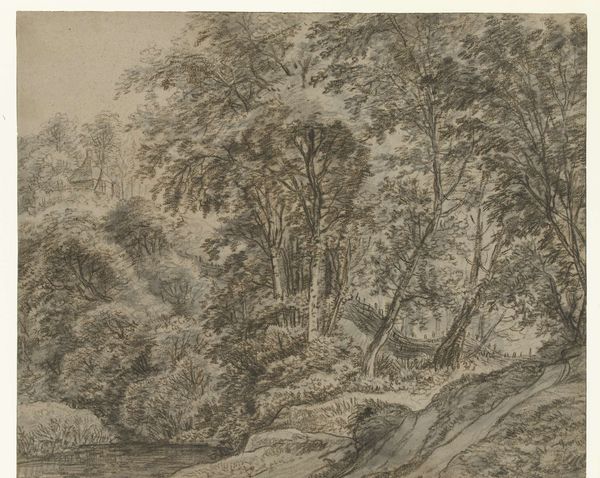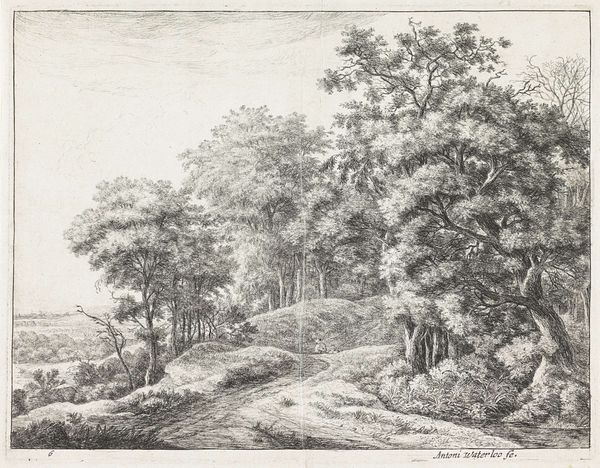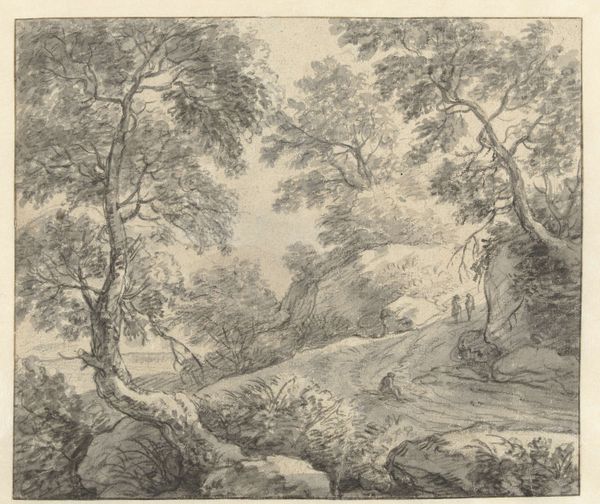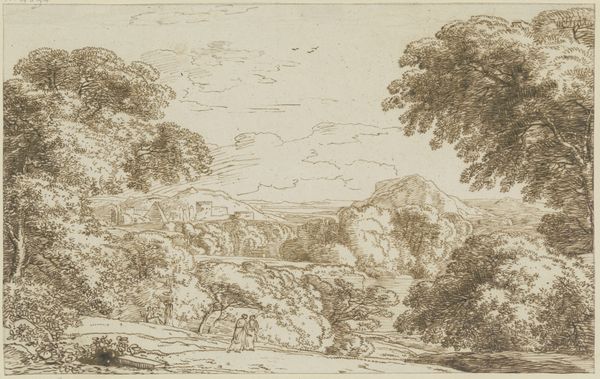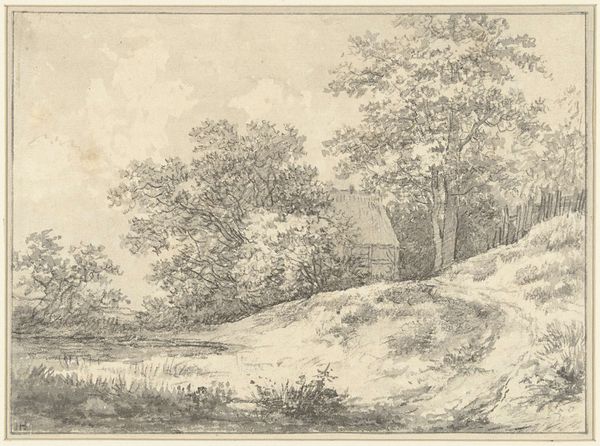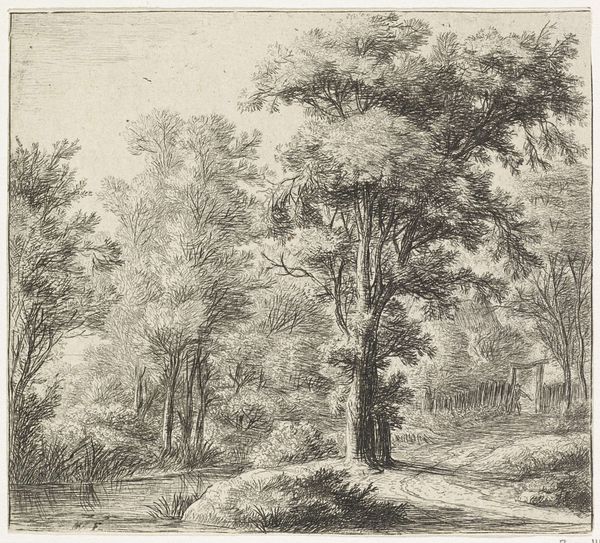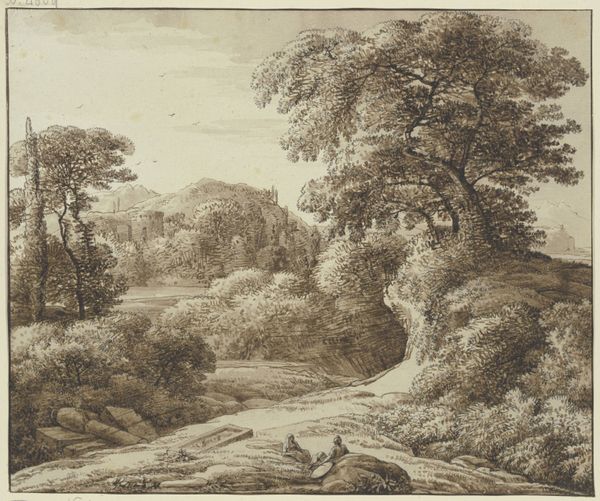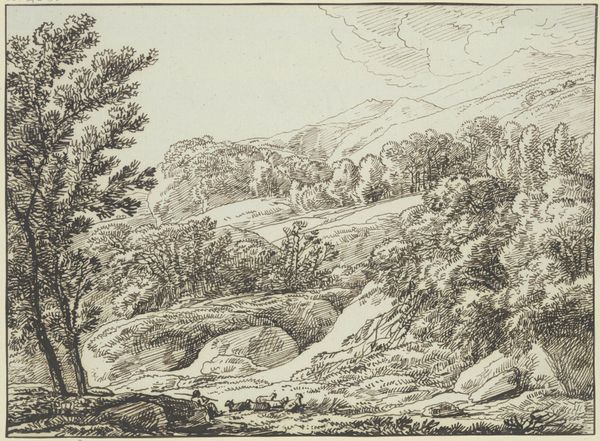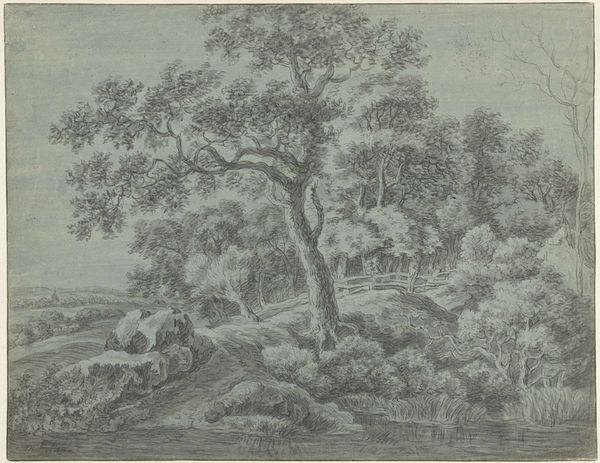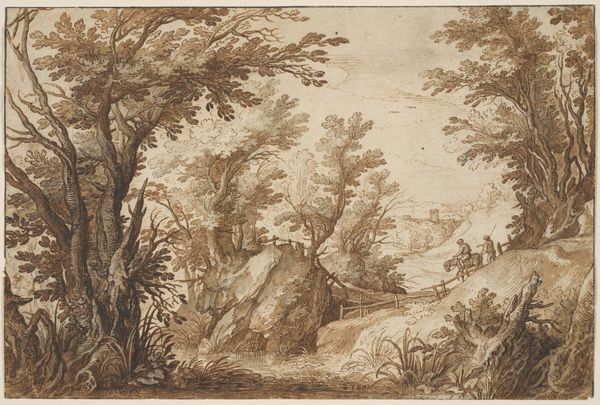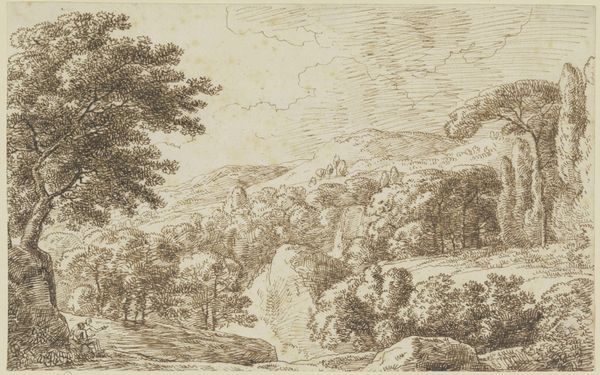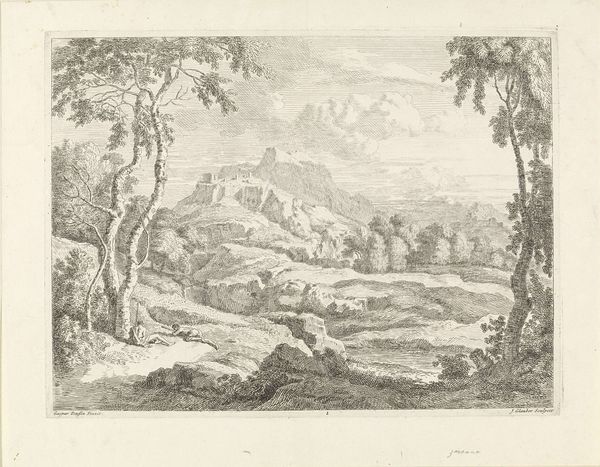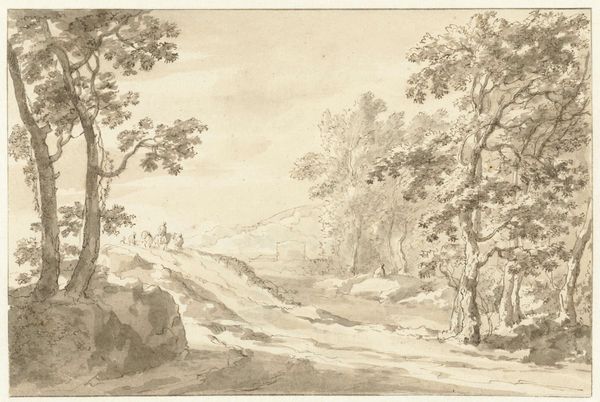
drawing, pencil
#
drawing
#
dutch-golden-age
#
pencil sketch
#
landscape
#
etching
#
pencil drawing
#
pencil
#
watercolor
#
realism
Dimensions: height 505 mm, width 607 mm
Copyright: Rijks Museum: Open Domain
Curator: Here we have "Trees in a Hilly Landscape," a pencil drawing by Anthonie Waterloo, dating from between 1619 and 1690. It currently resides here at the Rijksmuseum. Editor: It’s immediately striking, this muted palette. The subtle variations of gray, almost monochromatic, evoke a sense of quiet observation. Curator: Indeed. Waterloo’s landscapes often capture this mood of pastoral calm. But I see more than just simple tranquility here. The way the trees cluster, the shadows they cast—it all feels deliberate, perhaps even allegorical. Think of the forest as a place of refuge, a retreat from the everyday world. It reflects the Dutch sensibility where nature is as much psychological as physical. Editor: An intriguing point, although I am initially drawn to the formal structure of the piece. Consider the use of line. The almost frenetic, dense lines define the foliage in the foreground, in sharp contrast to the more spacious background. The slope, a diagonal counterpoint, adds visual dynamism. What about the etching-like qualities given this is a pencil drawing, where these dense marks almost give the illusion of much deeper relief? Curator: Perhaps those linear choices are not random. Trees have long been symbols of family, of rootedness, of enduring strength. Given the turbulence of the 17th century, that would not be without meaning. This connects, too, with the ever-changing nature of identity. As we build our modern sensibilities atop that landscape—as with this physical rise of the landscape and roots in it—the enduring need for solidity feels, to me, central to its core message. Editor: And it cannot be stressed how crucial negative space plays in such a muted visual composition. Without those clear areas of respite for the eyes, we may lose the beauty, as they enable this interplay of texture and tonal nuance. I keep being drawn back to the rendering of the leaves, the subtle gradients achieved through what must have been extremely skilled and patient use of pencils. Curator: Looking at it that way makes you appreciate the image’s craftmanship for how much patience it needed, certainly. I can’t help thinking about how Dutch Golden Age landscapes also served as reflections of national pride, expressions of dominion over their land even as they found freedom of expression, through which they found ways to express universal emotions and longings. Editor: It’s true that the painting seems very personal even in its seeming objectivity. Thank you, that's given me plenty to think about! Curator: And likewise, the artful layering is just fascinating! It is an artwork one could truly observe at length.
Comments
No comments
Be the first to comment and join the conversation on the ultimate creative platform.
